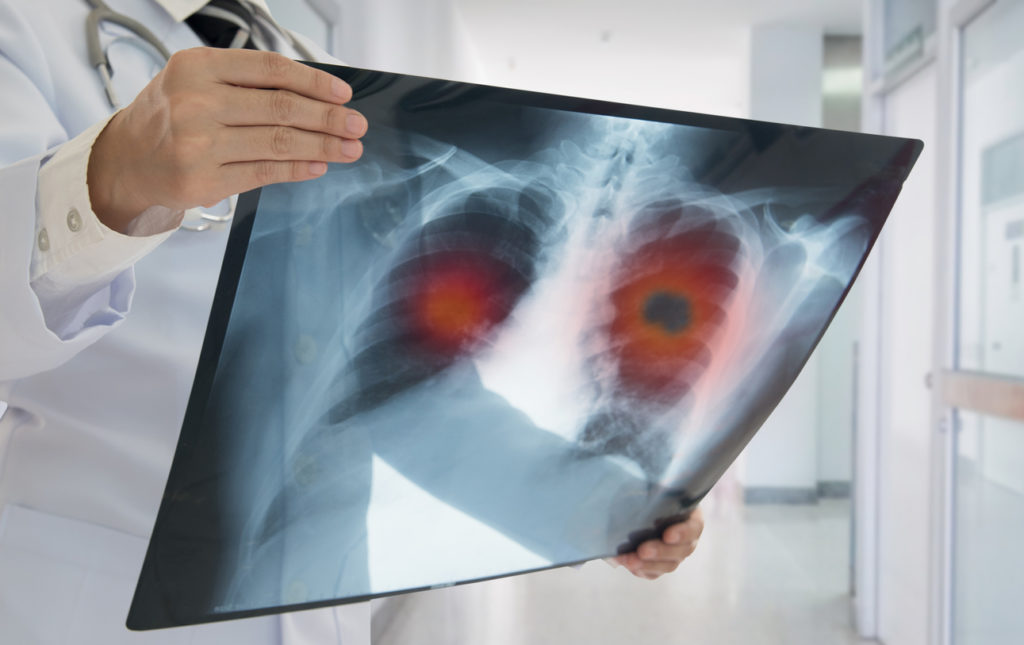
What is Lung disease?
From the National Cancer Institute, Lung or Respiratory disease affects the lungs and other parts of the respiratory system. They may be caused by infection, by smoking tobacco, or by breathing in secondhand tobacco smoke, radon, asbestos, or other forms of air pollution. Respiratory diseases include asthma, chronic obstructive pulmonary disease (COPD), pulmonary fibrosis, pneumonia, and lung cancer.
How common is respiratory disease/COPD in Australia?
According to the Australian Institute of Health and Welfare, almost one-third (30%) of Australians reported having chronic respiratory conditions. The number is only increasing.
What are the different types of Respiratory disease?
From UnityPoint Health, the most common types of Respiratory disease are:
- Asthma- Asthma is defined as a common, chronic respiratory condition that causes difficulty breathing due to inflammation of the airways. Allergic reactions, infections and pollution can all trigger an asthma attack.
- Chronic Obstructive Pulmonary Disease (COPD)- Chronic obstructive pulmonary disease is an umbrella term that encompasses several respiratory illnesses that cause breathlessness, or the inability to exhale normally.
- Chronic Bronchitis- Chronic bronchitis is a form of COPD emphasized by a chronic cough. Usually, people cough up sputum (mucus from the lungs), especially in the morning.
- Emphysema- Emphysema is a serious respiratory disease and is another form of COPD. Those who suffer from emphysema have trouble exhaling air from their lungs. Most commonly leads to respiratory failure and the need for extra oxygen to meet breathing needs.
- Lung Cancer- With the ability to develop in any part of the lungs, this cancer is difficult to detect. Most often, cancer develops in the main part of the lungs near the air sacs. DNA mutations in the lungs cause irregular cells to multiply and create an uncontrolled growth of abnormal cells, or a tumour. These tumours interfere with the regular functions of the lungs.
- Cystic Fibrosis/Bronchiectasis- Cystic fibrosis is a genetic respiratory disease caused by a defective gene that creates thick and sticky mucus that clogs up tubes and passageways. This mucus causes repeat, and dangerous, lung infections, as well as obstructions in the pancreas that prevent important enzymes from breaking down nutrients for the body. People who have cystic fibrosis will also develop bronchiectasis. Which is a condition in which patients develop abnormally dilated bronchial tubes. This allows mucus to pool, causing frequent respiratory tract infections, wheezing and shortness of breath.
- Pneumonia- Pneumonia is a common lung disease caused by an infection in the air sacs in the lungs. The infections can be bacterial, viral or fungal.
- Pleural Effusion- Pleural effusion is a collection of fluid between the lung and the chest wall in what’s called the pleural space.
- COVID-19- A respiratory illness that belongs to a large family of coronaviruses.
Chronic Obstructive Pulmonary Disease
Chronic bronchitis and emphysema in particular are grouped under a broader condition called COPD (Chronic obstructive pulmonary disease). COPD causes the lungs to become extremely inflamed and injured.
If you have COPD, you may suffer from ongoing symptoms such as:
- Breathlessness – an inability to breathe normally, especially when doing a form of exercise or high-intensity movement.
- A cough that will not go away – sometimes this cough can also be seen with phlegm
- Being more susceptible to chest infections which cause intense coughing
- Wheezing when breathing
Without proper treatment, these symptoms will not ease and may get worse. People with COPD can also sometimes have flare-ups, which cause these symptoms to get worse during some periods. In any case, COPD should not be ignored, and you should be able to have time off work to seek proper treatment and rehabilitation without needing to sacrifice your income.
Although smoking can increase your chances of developing COPD, it is not always the cause. Other causes may include long periods of exposure to harmful fumes or dust. Sometimes this can also occur through your workplace (link to workers comp).
Whatever form of lung condition you have, these conditions cause extreme difficulty to breathe and may affect your ability to have a job and earn an income.
What are the causes of lung disease?
Cancer Australia lists the many risk factors for respiratory disease, including but not limited to:
Lifestyle factors
- Current or former tobacco smoking – this is the greatest risk factor for lung cancer. The risk is greatest for people who begin smoking early in life, smoke for longer and smoke more often.
Environmental or occupational factors
- Exposure to second-hand smoke (passive smoking).
- Occupational exposures, such as exposure to radon, asbestos, diesel exhaust and silica.
- Exposure to air pollution.
Personal factors
- Increasing age.
- Family history of lung cancer.
- History of chronic lung disease, including chronic obstructive pulmonary disease and pulmonary fibrosis.
- Personal history of cancer, including lung cancer, and head and neck cancer.
- History of radiation therapy to the chest for other cancers.
- Infection with HIV (human immunodeficiency virus).
- Certain gene mutations.
What symptoms do Australians with Lung Disease live with?
Long-term lung diseases can cause a range of symptoms that may differ from person to person.
According to American Lung Association, several symptoms should not be ignored, including:
- Chronic cough: A cough for eight weeks or longer is an important early symptom that tells you something is wrong with your respiratory system.
- Shortness of breath: It’s not normal to experience shortness of breath that doesn’t go away after exercising, or that you have after little or no exertion. Laboured or difficult breathing—the feeling that it is hard to breathe in and out—is also a warning sign.
- Chronic mucus production: Mucus, also called sputum or phlegm, is produced by the airways as a defence against infections or irritants. If your mucus production has lasted a month or longer, this could indicate lung disease.
- Wheezing: Noisy breathing or wheezing is a sign that something unusual is blocking your lungs’ airways or making them too narrow.
- Coughing up blood: If you are coughing up blood, it may be coming from your lungs or upper respiratory tract. Wherever it’s coming from, it signals a health problem.
- Chronic chest pain: Unexplained chest pain that lasts for a month or more—especially if it gets worse when you breathe in or cough—also is a warning sign.
What help is available for Australians with lung damage?
Unfortunately, damage caused by some lung diseases and COPD is permanent. Some treatments are available to lessen symptoms and help with a better quality of life. These treatments can include a plan to stop smoking with help from your doctor, some types of inhalers and medicine, rehabilitation through specific exercises and educational programs and in extreme cases, surgery. You should consult with your GP to find the best medical care for living with lung disease.
As well as living with the disease and having your lifestyle change, the financial burden can be overwhelming to deal with on top of this. TPD insurance may be available as part of your superannuation policy. TPD is a lump sum payment that can help with your financial needs. Super Claims Assist can help you claim this from your Super Fund through a claims process. Find out more about our claims process below.



